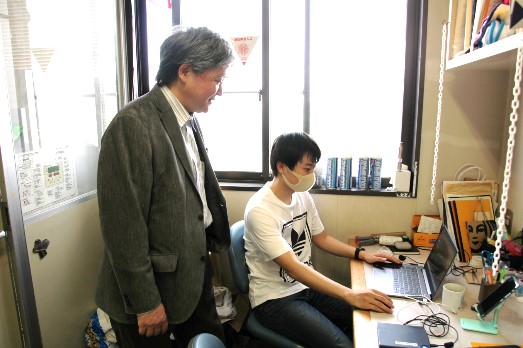Striving to realize a CO2 direct air capture and utilization system for local energy production and consumption

Kunitake Laboratory, Institute of Industrial Nanomaterials
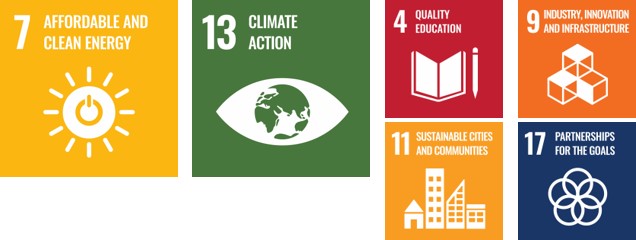
Research overview – Aiming to curb global warming by directly capturing CO2 from the atmosphere –
The Institute of Industrial Nanomaterials of Kumamoto University was established in April 2020. The Institute advances research on nanosheets and the utilization of pulsed power such as the impact of explosions. In particular, nanosheets, which are extremely thin materials, are actively studied to help realize carbon-neutral and sustainable societies with diverse potential applications.
Professor Masashi Kunitake’s laboratory is participating in the Development of Global CO2 Recycling Technology towards “Beyond-Zero” Emission, which is a collaborative project led by Kyushu University (hereinafter the “Beyond-Zero Project” or “the Project”). The Project aims to realize sustainable resource circulation to regenerate the global environment by 2050 and has been selected as a Moonshot Research and Development Program, a large-scale program operated and funded by the Japanese government (the New Energy and Industrial Technology Development Organization [NEDO]).
Not only must new emissions of CO2, a greenhouse gas, be curbed but also CO2 that has already been emitted to the atmosphere must be reduced to help mitigate global warming. The Beyond-Zero Project aims to create a novel energy recycling system that reduces the negative environmental impact by developing a technology that directly captures CO₂ from the atmosphere and converts it into fuel. Such a system has been named the Direct Air Capture and Utilization (DAC-U) System. In particular, Prof. Kunitake's laboratory strives to develop an extremely thin polymeric membrane that allows CO₂ to permeate selectively among the different molecules in the atmosphere. Such a membrane functions as an air filter, which does not require a large amount of energy to operate. It can be installed in any size and at any location. If we can develop a device with a size similar to an outdoor unit of a home air conditioner system, the “local energy production and consumption,” in which CO₂ is recovered at home and then used as fuel at home, should be realized.
Through the Project, Prof. Kunitake’s research team continues innovations to realize materials that can solve energy and environmental issues and can fundamentally change our daily lives and social structure.
* For more details about the research activities and Projects of the Institute, please visit:
https://www.nedo.go.jp/content/100923498.pdf
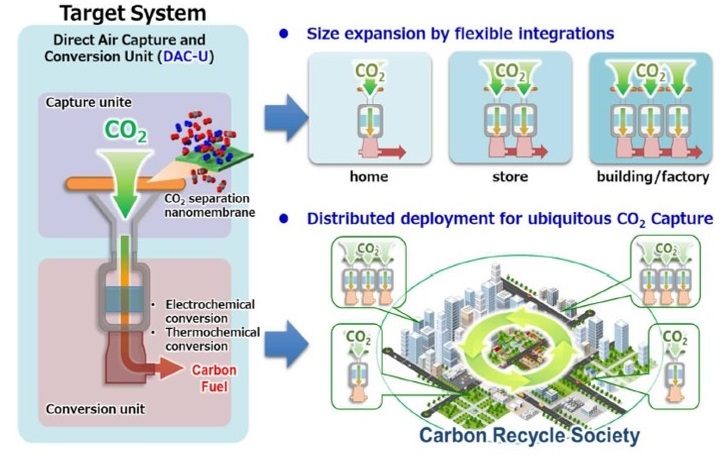
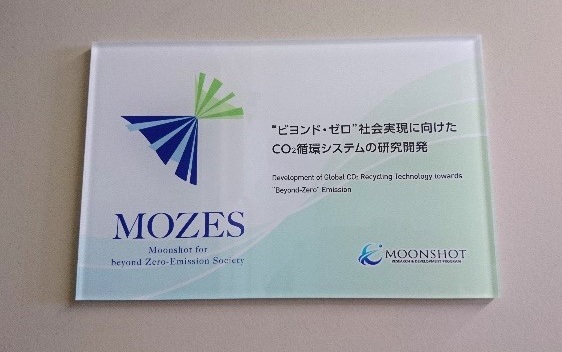
Researcher interview (Professor Kunitake) — Achieving SDGs —
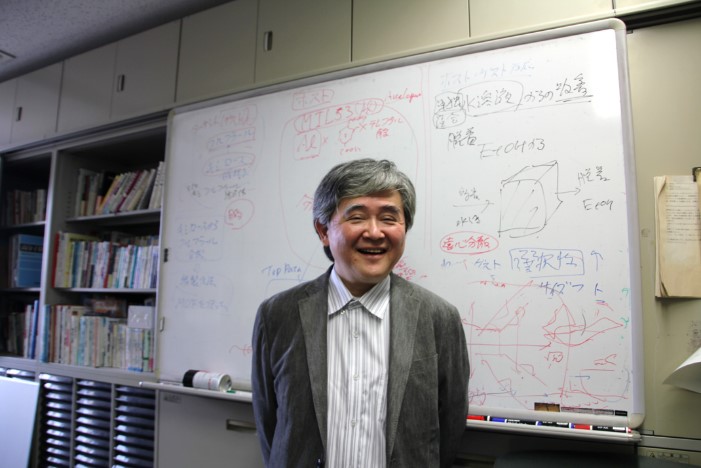
Prof. KUNITAKE, Institute of Industrial Nanomaterials
Please tell us about challenges in the development of the DAC-U system.
Our laboratory aims to develop a technology that utilizes membranes separation to capture and concentrate CO₂ in the Project, which is less common among existing CO₂ recovery technologies across the world. The most common methodology for CO2 recovery is chemical absorption, in which CO₂ contained in the exhaust gas is absorbed by an alkaline solution and then separated and recovered. On the other hand, under the Project, we are trying to develop a polymeric membrane that selectively permeates and concentrates CO₂, which makes up 0.04% of the air. The primary challenge of our development is the trade-off between selectivity and permeability of CO₂, both of which are required for the material. In general, there is an inverse relationship between permeability and selectivity, where increasing one decreases the other. We strive to increase the permeability of CO₂ while simultaneously improving the selectivity using a nanometer-order ultra-thin membrane.
In addition, since the mission of the Beyond-Zero Project covers not only technological development but also the implementation of the technology across society, we must evaluate the environmental impacts of the developed technology throughout its entire life cycle by performing life cycle assessments (LCA). We need to conduct research and development (R&D) with an integrated perspective from technological development through social implementation and sustainability.
With such comprehensive efforts under the Project, what global issues do you aim to solve?
Reducing the atmospheric CO₂ level and curbing global warming are common challenges to all humankind. In the Project, we aim not only to reduce CO₂ emissions, which are the main cause of global warming but also to build a system that realizes CO2 circulation by recovering CO₂ and using it to generate energy.
Existing large-scale technologies can be used to recover CO₂ in sites with high CO₂ concentrations such as large-scale factories. However, we encounter hurdles when developing CO₂ recovery technologies for sites with relatively low CO₂ concentrations such as households. We believe that, through the Project, we can build a sustainable and energy-robust society by realizing local energy production and consumption at all sites within a society, including households, by focusing on areas that have received less attention in the context of conventional technologies.
